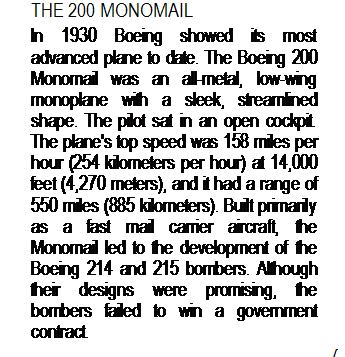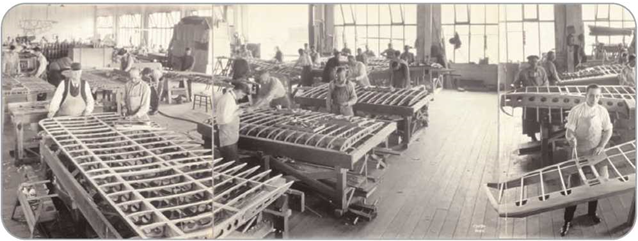How Boeing Began
William Boeing, founder of the aerospace giant that bears his name, was
born in 1881 in Detroit, Michigan. His father was a wealthy mining engineer of German origin. After graduating in engineering from Yale University, William Boeing made his own fortune trading forestlands in Washington State. Airplanes, however, were his main interest. In 1910 he went to Los Angeles to watch planes gather at the first air meet to be held in the United States, but to his disappointment failed to persuade any of the pilots there to take him for a flight.
Boeing found a partner in a U. S. Navy engineer named George C. Westervelt. The two young men were convinced that they could build airplanes, and they began work on a biplane. Having taken to the air for the
![]()

 |
first time as a passenger in a Curtiss biplane, William Boeing learned to fly in 1915, taking lessons from pioneer pilot Glenn L. Martin.
The first Boeing airplane was the Model 1, also known as the B&W. It was
a biplane with floats for landing on water, and it flew for the first time on June 29, 1916. Its top speed was only 75 miles per hour (121 kilometers per hour).
Westervelt went his own way, and Boeing set up a business, Pacific Aero Products, to build the B&W. In April 1917, Pacific Aero Products became the Boeing Airplane Company, based in Seattle, Washington. Boeing sold airplanes to the government—the United States was now engaged in World War I.










